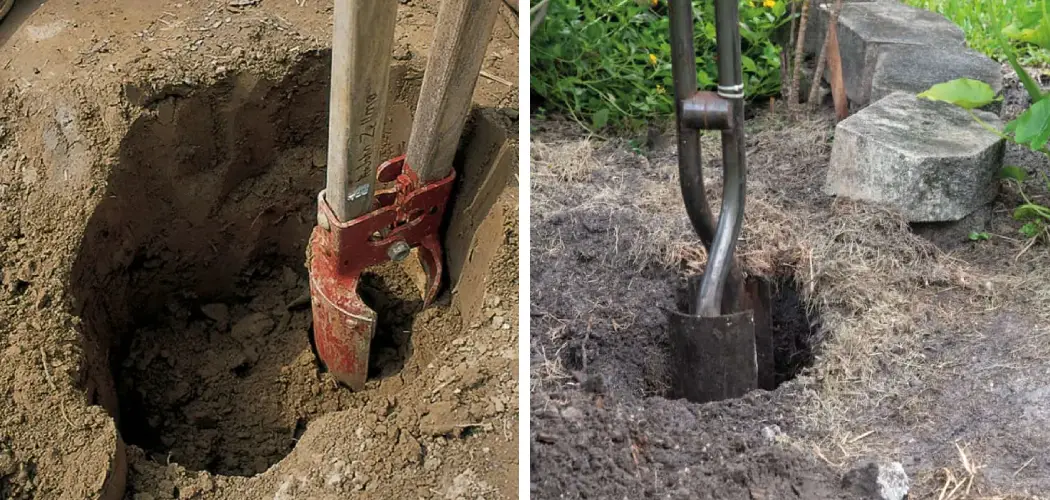Digging a hole in rocky soil can be daunting, but it is an important skill to have if you want to garden or do landscaping work. Rocky soil is much more difficult to dig and loosen than regular loam or sand-based soils, so preparation and the right tools are essential.
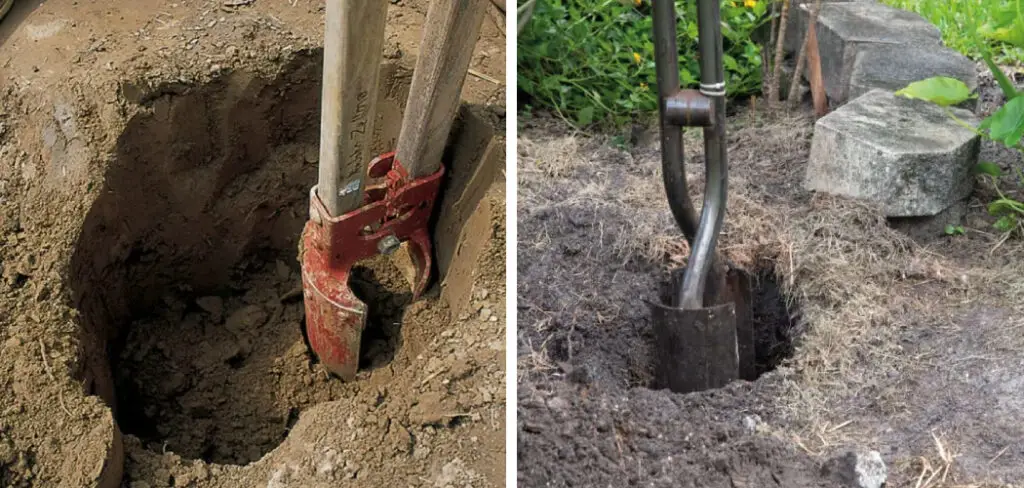
With the proper technique, you can dig a hole in rocky soil that is deep and wide enough for planting, landscaping, or whatever else you may need.
One advantage of digging a hole in rocky soil is that it can help to aerate the soil. The process of digging encourages oxygen and moisture penetration into the soil, allowing plants to take root more easily. Additionally, digging a hole also helps to minimize compaction, which is one of the main factors that can lead to poor drainage and shallow-rooted plants. Additionally, digging a hole can help to create stability and promote healthy root growth. You can find step-by-step instructions on how to dig a hole in rocky soil in this blog article.
Step-by-step Instructions for How to Dig a Hole in Rocky Soil
Step 1: Inspect the Area
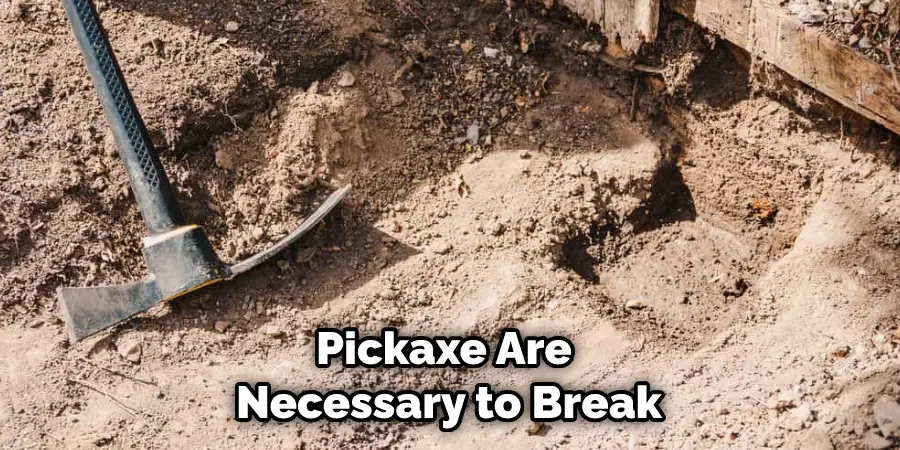
Before starting to dig, examine the area carefully. Ensure there are no buried utility lines or other obstructions in the way. If you do encounter a rock while digging, assess if it can be easily removed.
Gathering the right supplies is essential depending on how large of a hole needs to be dug and what type of soil you’re working with. A shovel and pickaxe are necessary to break through rocky soil.
Step 2: Soften the Soil
Using a garden hose or watering can soften the soil by pouring an adequate amount of water on it. This will make it easier to dig out sections of the hole.
Start by digging out a shallow trench to form the edge of the hole. Make sure to dig deep enough so that you can move around easily while working on it.
Step 3: Begin Breaking Through Rocks
As you start digging deeper, use your shovel and pickaxe to break through the rocks. This can be a laborious process, so plan on taking several breaks in between. Once you’ve loosened some rocks with your shovel and pickaxe, use your hands or a spade to carefully dig out large pieces of rock that you can easily remove.
Step 4: Remove the Rocks

Ensure you properly dispose of any large rocks you’ve removed from the hole. If they are too heavy to carry, use a wheelbarrow or trolley to transport them away. Once all of the rocks have been removed, start smoothing out the sides and bottom of the hole. Use a spade or other digging tool to level out any bumpy patches.
Step 5: Remove Any Loose Soil
When you are satisfied with how the sides and bottom look, use a shovel or rake to remove any loose soil that could cause the sides to collapse; when you’re done digging, use a shovel or rake to fill up the hole with soil. Make sure to firmly pack it down, so the sides don’t collapse when finished.
By following these steps, you can successfully dig a hole in rocky soil. Once you’re done, you can use the hole for many purposes, from planting trees to burying utility lines.
Tips for How to Dig a Hole in Rocky Soil
- Wear protective safety gear like gloves, long-sleeve shirts, and goggles to protect yourself from rock fragments that may fly out of the hole as you dig.
- Ensure the area is clear and free of debris or obstructions before beginning.
- Use a shovel with a sharp blade to make cutting the soil easier.
- Use a pickaxe to break up larger rocks and aid in loosening soil.
- Place a tarp around the area to contain any dirt or debris that may be thrown outward during the digging process.
- Dig cautiously and slowly, paying attention to safety-related concerns like buried power lines and other unseen hazards.
- Maintain good posture while digging to avoid injury.
- Have a friend nearby in case of emergency or to help clear the way if necessary. If possible, enlist the help of a professional excavator for any large hole-digging projects that could be too difficult to handle alone.
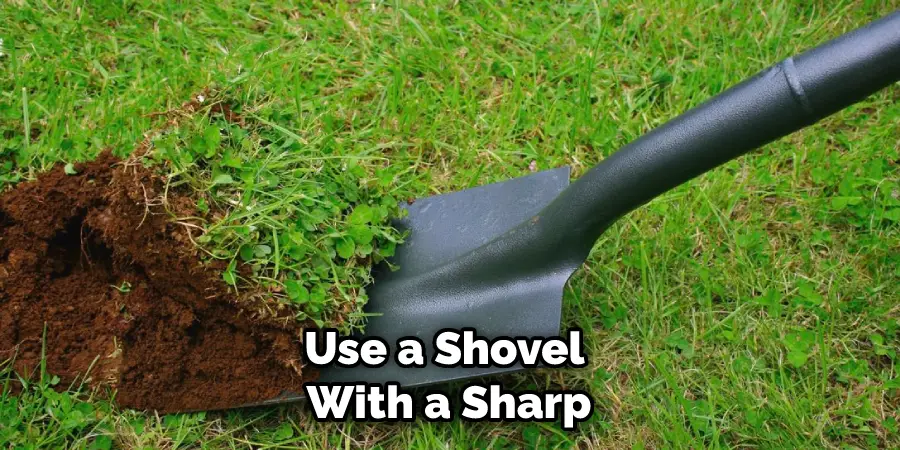
Safety should always be at the forefront of any excavation project, especially when working with rocky soil. By following these tips and taking the proper precautions, you can ensure that your project is completed safely and efficiently.
How Can You Prevent Erosion or Shifting of Material When Digging a Hole in Rocky Soil?
When digging a hole in rocky soil, it is important to take steps to prevent erosion and shifting of the material. This could be done by lining the sides of the hole with plastic sheeting or tarps. Additionally, backfilling can help reduce erosion and keep the soil from shifting after excavation.
Backfilling involves replacing the displaced material in the hole after it is dug. This will help redistribute the soil’s weight and create a more stable surface around the hole. To further prevent erosion or shifting, you can build a retaining wall around the perimeter of your excavated area. This should be done before beginning excavation.
The material used for your wall should match the type of material that is being excavated.
Utilizing a retaining wall should help prevent the erosion of soil and reduce the chances of material shifting in the excavation area. Another way to prevent erosion or shifting when digging a hole in rocky soil is to use a sump pump to fill up your excavation with water and establish a bedrock foundation.
This will help to reduce the chance of erosion and shifting. Finally, when you finish your excavation project, cover up the hole with a protective tarp or plastic sheeting to protect it from rainwater.
How Do You Clean Up and Dispose of Debris From Digging a Hole in Rocky Soil?
After you have successfully dug a hole in rocky soil, it is important that you take the proper steps to clean up and dispose of any debris. Depending on the type of rock in the soil and what kind of equipment you use to dig your hole, cleaning up may involve different strategies.
If you are dealing with small rocks or gravel in your soil, you can clean them up with a shovel or broom. Take the time to go through the hole and remove all visible rocks and other debris. You may also want to consider using a metal detector if there are any large objects that need to be removed from the area.
If you dug your hole with a pickaxe or other larger machinery, you would likely have more debris to clean up. For example, when using a pickaxe or jackhammer, it is common for the dust and dirt from the rock to scatter in all directions.
To clean this up, use a garden hose and nozzle to spray water on the hole and surrounding area. This will help settle any dust and make shoveling the dirt easier. Once you remove all the dirt, use a broom or rake to sweep away any leftover debris.
How Do You Maintain Tools Used for Digging a Hole in Rocky Soil?
One of the most important steps in digging a hole in rocky soil is maintaining the proper tools. It’s essential to keep your equipment in good working order so that you can easily break through rocks and hard soil without having to stop and repair any damage. Here are some tips for maintaining your tools:
- Clean Tools After Every Use: After digging a hole in rocky soil, clean the tools you use as soon as possible. This includes wiping off dirt and debris from all components of the tool, such as the handle and blade.
- Sharpen Blades Regularly: If you use a shovel or other tool with a blade, it’s important to sharpen the blade frequently. This will help ensure that the blade can easily penetrate through hard soil and rocks without getting dull too quickly.
- Regularly Grease Moving Parts: It’s also a good idea to grease any moving parts of your tools, such as hinges or joints. This will help ensure that the tools move freely and don’t get stuck in place, which can cause damage to both the tool and your hands.
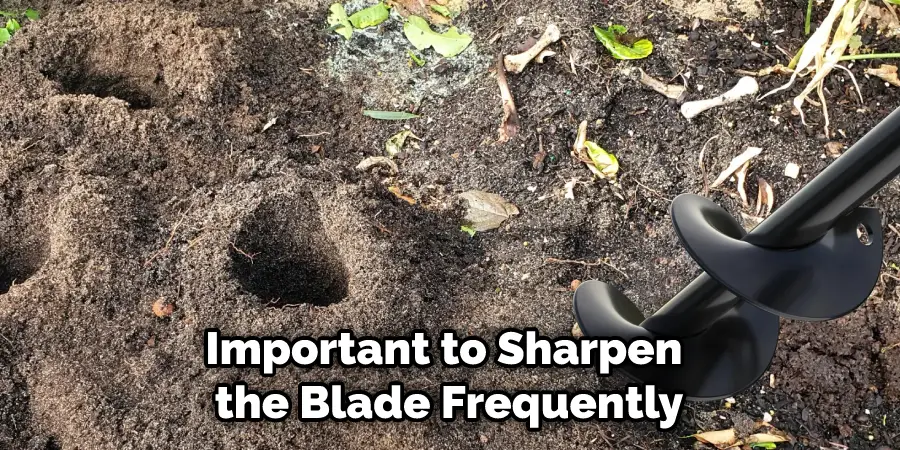
By following these steps and taking care of your tools, you’ll be able to dig a hole in rocky soil much more easily and quickly.
Conclusion
In conclusion, digging a hole in rocky soil is not easy, but it can be done with the right tools and techniques. Using proper protective gear, starting with small holes to break up larger ones, and utilizing specialty tools such as a pickaxe or shovels designed for rock breaking, you can successfully dig holes in rocks.
Additionally, if the soil is too hard to break through, alternative methods such as blasting or chemical loosening agents can be used. With a bit of patience and perseverance, even the most stubborn of rocky soils can be breached.
I hope this article has been beneficial for learning how to dig a hole in rocky soil. Make Sure the precautionary measures are followed chronologically.

